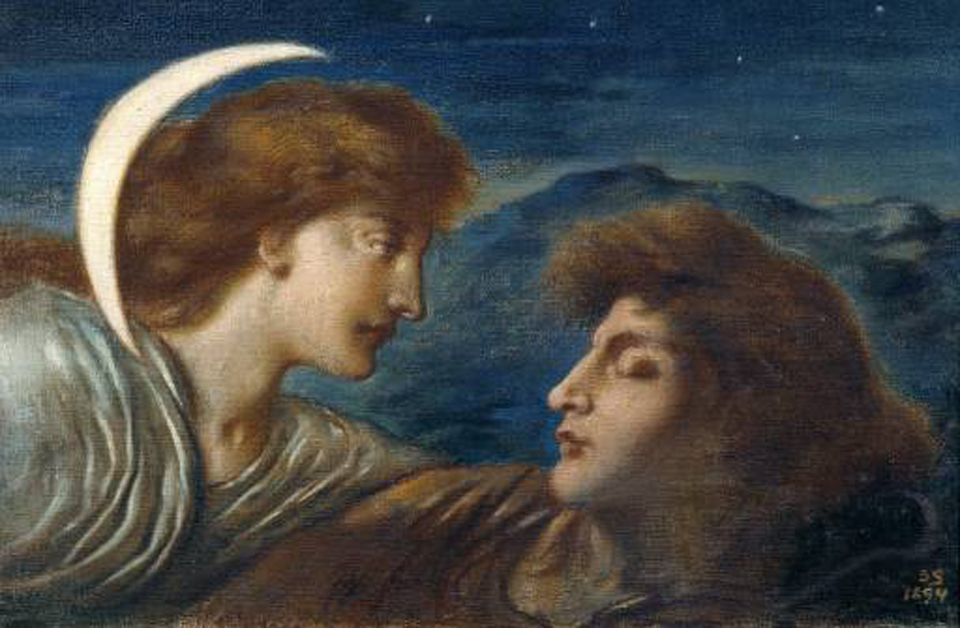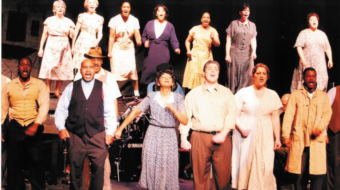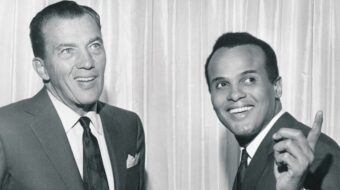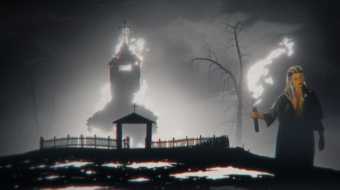
In the wake of our review of his Naked Revolution: A Socialist Realist Opera, the composer, Dave Soldier, thought People’s World might also be interested in his CD Zajal, an album of 11 songs performed in Hebrew, Arabic and Romance (early Spanish), and one in English. The poets in all but one song lived in what was called the Golden Age of Spain, a time from 900 to 1400 CE, when a civilization flourished unlike any other in history. During that period, with occasional interruptions, Jews, Moors and Christians happily cohabited the land, sharing culture, ideas, science, medicine, music, food and language.
The intellectual exchanges among the learned intelligentsia of all three religions contributed to all their mutual enhancement. Not only that but, thanks to the Arabs primarily, they started translating ancient Greek texts into modern languages, and from that interest in the classical world emerged what we today consider the emergence of post-feudal Modern Europe, leading into the Renaissance and Enlightenment. Would that the world we know today had such a high level of collegial respect among peoples and their different beliefs!
“On a trip to Spain in 2004,” read the program notes to Zajal, “Soldier read about the Andalusian caliphate, when the Muslim, Christian and Jewish communities not only coexisted, but co-created much of the world we inhabit today. Together, they produced the novel, cowboy culture, the guitar, the dance suite, the Kabbalah, Maimonides and ibn Arabi and the discovery of the New World. And modern song: the zajal and muwashaha introduced the verse and chorus that are the backbone of popular music. Imitation of Andalusia’s singing oud players begat the troubadours and the figure of the wandering poet and singer in its myriad incarnations, from Villon to Joni Mitchell.”
The composer extrapolates the influence of the Andalusian musical construct out so far as to suggest it “created the tradition of Western song, from Schubert and Verdi to Hank Williams and the Beatles.”
Soldier lives in New York City, where he identifies himself as a Downtown composer and instrumentalist. Filtered through his 21st-century ears and consciousness, he sets the lyrics of Zajal to various musical forms that were known as far back as the Golden Age, such as bulería, fandango, petenera, rumba, and tango, with an omniscient presence of flamenco, some of which are still well known in contemporary dance halls.
I heartily recommend the CD in physical form. I, for one, love to travel in my car with a few lively CDs to accompany my drive, and this one’s gonna make it into my playlist pronto. But the complete collection is also available on YouTube. The great advantage of getting to know these songs online is that each song has been produced as a video, with full lyrics in the original languages and good English translations. Videos also include rich artist illustrations which add much to the atmosphere of each piece. The entire album can be accessed here.
In many ways this crossover collection of songs could be compared to Ayre, newly composed settings of traditional Christian, Jewish and Arabic folksongs and lyrics by Argentine Jewish composer Osvaldo Golijov, who enjoys juxtaposing, contrasting and bringing out the similarities of emotion and experience across the human condition. A group such as cellist Yo-Yo Ma’s The Silk Road Ensemble likewise aims to bring cultures together in a world riven by xenophobia, hate and conflict.
“Raqib (The Spy),” the first cut on the CD, is sung in Hebrew, Arabic and Romance, setting the multi-cultural tone for the rest of the disc. We are introduced to lead vocalist, the Israeli-Moroccan-Persian Ana Nimouz, who appears on all but three cuts. “I love a foreign boy who loves me / but his spy keeps us apart.” One could not help but think of all the loving couples and families separated by racist and inhumane government policies in today’s world. The lyrics are by Moshe ibn Ezra, also known as Abu Harun Musa—a conflation of identities if the Hebrew and Arabic names mean anything—who lived between 1000 and 1100. The musical sound Soldier evokes is that of a Latino Big Band.
On the second cut, “Ma’an Walnaar (Water and Fire),” Syrian-born Armenian artist Kevork Mourad supplied the art, a phantasmagorical mash-up of three-dimensional architectural, botanical, floral, ornithological and figural sketching. I had encountered his work a couple of years ago in connection with his spontaneous, on-the-spot illustration of a live performance of Händel’s oratorio Israel in Egypt. The poetry, sung in Arabic and Romance, is by al-Ama at-Tutili, known in English as the Blind Poet of Tudela, who lived in the 1100s. Triana Bautista, inheritor of the traditions of her famous Roma (Gypsy) flamenco family, makes her only vocal appearance of the CD on this number.
Maurice Chedid, a well-known singer and oudist from Lebanon who, according to the program notes, “drives a livery cab in New York,” performs “Ya Za’iri Fid Doha (My Visitor in the Morning),” the only song on the album not composed by Soldier. It is by the Rabbani Brothers and dates from sometime in the 1950s-70s. It’s a love song, like most on the CD, featuring kaleidoscopic art in the video. “Your presence is light in my eyelashes / a fragrance between love and passion.”
“B’Abi (My Father)” is cut four, sung in Arabic by Ana Nimouz. Set as a drunken blues waltz, its timbre summons up nights in the gardens of Spain: The spirit of Spanish composers Albéniz, Tárrega and Granados infuses this number, which is an introspective contemplation of a relationship between father and child. The video artwork is by Vitaly Komar, Soviet-era émigré to the U.S. who also supplied artwork for Naked Revolution. Komar incorporates certain iconographic features of official Soviet culture, and I presume, but do not know, that the photographs he includes and manipulates are portraits of his own family members.
“Bi-Moa (Without Myself)” is the only song rendered in Farsi, again by the consummately talented linguist Ana Nimouz. The lyrics are by the famous poet Persian Rumi (Jalal Ad-Din), who lived in the 1200s. The subject is forlorn love, and the musical mood is one of Latino free jazz.
The odd man out in the collection is next: Dave Soldier wrote both lyrics and music to “The Stars of Country Music Greet the Spring,” using the flamenco form of the sevillanas. Although it’s a new song written in America, its musical modalities fuse the medieval Spanish with the modern Country-Western. The video is an enchanting collage of clips of North American Mexican singers in musical ensembles and dances from the 1930s to the 1950s. As a whole, sound and vision combined, this number is undoubtedly meant by the composer to make and symbolize his point about the evolution of what we know as “song” from these thousand-year-old Andalusian forms. It single-handedly summons up the entire spirit of the rest of the album. It’s an inspired, original 4:11 work.
Many readers will know the phrase “Eretz Israel,” the Land of Israel, as a geographical reference but more as an emotional—and later political—aspiration of a people long exiled from its homeland. Hebrew poets across time and space picked up the lamentations on the shores of the rivers of Babylon to express their longing for a land most only knew from literature and myth. Cut no. 7, giving us a different angle, is “Eretz Sfarad (Land of Spain),” whose lyrics are the only poem that survives in medieval Hebrew written by a woman. Her own name has been lost, but we know her as the wife of Dunash ben Labrat, who lived in the 900s. Here the poet rhapsodizes about the only homeland she knows, Sfarad (from which comes the term Sephardic, meaning the Jews who came from Spain and Portugal). The flamenco-flavored tune is sung by Barbara Martinez, her only appearance on the CD.
One of the great Hebrew poets, also a philosopher and physician, was Yehuda Halevi, born in Toledo, Spain, ca. 1075, whose longing for Eretz Israel actually did take him there, where he died, in Jerusalem, in 1141. Soldier has set his poem “No Me Mordas Habibi (Don’t Bite Me, Baby)” as a paso doble, a love song perhaps not originally intended to be funny, but it sure is now. It’s performed in Hebrew, Arabic and Romance—la Nimouz is joined by the expressive David Castellano—and it’s accompanied by a video compilation of old silent movies that will put a smile on any viewer/listener’s face.
It is amazing what life and exuberance Soldier finds in these thousand-year-old songs. The persistence of Ladino, or Judeo-Spanish culture, songs in particular, in exile after the expulsion of the Jews in 1492, in their new lands of the Balkans, the Ottoman Empire and North Africa, is one of the linguistic wonders of the world. The medieval Spanish they brought with them survived, often assimilating words from the local languages, and still survives, although now virtually no children are being brought up speaking it as their first tongue. Many words and pronunciations in Ladino reveal to scholars how the Spanish of the 15th century would have actually sounded at the time without the later evolution in Spain itself. In part, Soldier’s efforts here prove that even new songs in Romance can be and are being written today.
Shmuel HaNagid (993-1055) is another of the renowned Hebrew poets of the Golden Age, born in Granada. Among his many accomplishments, he served as Prime Minister of the Muslim state of Granada, and was battlefield commander of the non-Jewish Granadan army. “Krav (Battle)” is his rumination on the psychology of war, accompanied by the great graphic work of Spanish painter Francisco Goya on the subject. This song is performed in Hebrew. “At the start, a battle is like a very beautiful girl / with whom every man longs to play. / But when the battle is over / it is like a repulsive old hag / and all her suitors mourn, cry and ache.”
Song 10 is “Beautiful Boy,” sung in Hebrew to more lyrics by Shmuel HaNagid. The video part on this piece presents the work of Jewish English artist Simeon Solomon (1840-1905), one of the leading figures in the pre-Raphaelite movement, who incorporated his own homosexuality rather graphically into his art, with both male and female subjects. Some of the Spanish Hebrew poets are also remembered for the openly homoerotic desire expressed in their work, so this is a logical pairing of sound and sight.
The final song is “Hal-dara Zabyu al-Hima (If),” accompanied by the Orientalist paintings of Jacques Majorelle. Soldier’s music combines genres—free jazz elements with a Middle Eastern inflection.
Zajal was produced by Pedro Cortes, called “the foremost American exponent of Gypsy flamenco.” In the orchestra are guitar and keyboards, trombones, violins, Iranian sentur, clarinet, bass, percussion, and vocals. The worlds it evokes are vast, yet the sentiments are intimate and personal. This one’s a keeper.
Zajal
Mulatta Records MUL043
Released January 1, 2020
UPC Code 700261 479521










